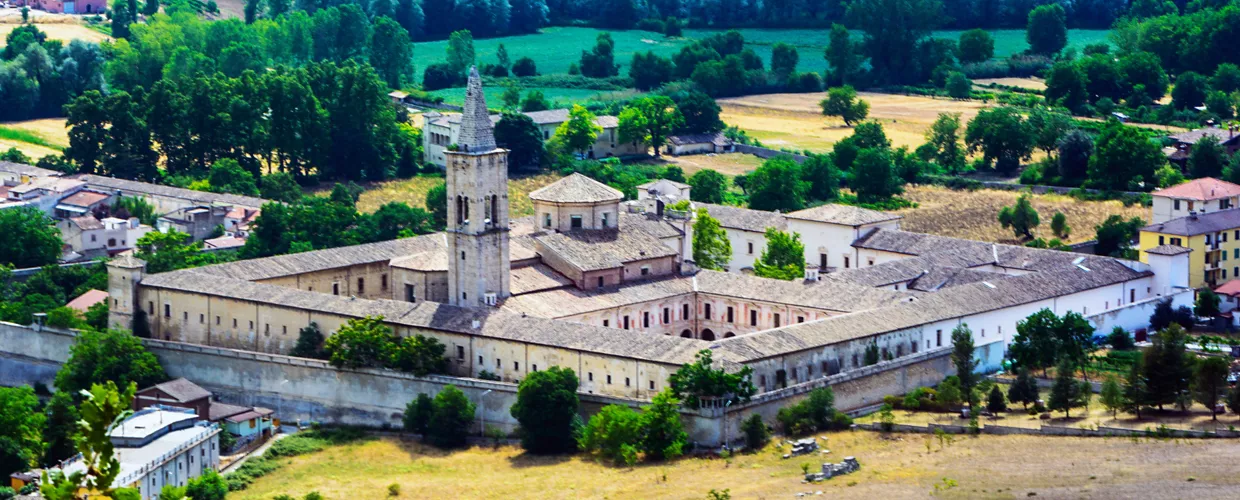This content was automatically translated. View the original text.


Overview
For centuries, it was the most important and famous settlement of the Celestine Congregation as well as being a reference for cultural, religious and civic life in the area. Founded by the Benedictine monk Pietro di Angelerio, a hermit, founder of the Celestine order and Popewith the name Celestine V. It was he who, in 1293, began the construction by expanding the small church of St Mary, dating back to the first half of the 13th century, into a new church dedicated to the Holy Spirit and a monastery. The current appearance of the abbey has almost nothing of its 13th-century appearance, and what can be seen today is the result of a massive reconstruction following an earthquake in 1706.
The layout of the complex is rectangular, walled, with inner courtyards and an imposing monastery, occupied by monks until 1806, when Napoleonic law led to the suppression of religious orders. The monumental 18th-century church in the Borromini style overlooks the main courtyard. Inside the church, in the shape of a Greek cross, you can admire stucco decorations, remarkable polychrome marble altars, a late 17th-century organ and, most importantly, the 15th-century frescoes in the Caldora chapel, to the right of the choir. To the left of the high altar, you descend to the small church of St Mary, the original heart of the abbey. To the right of the church, crossing the courtyard of the Well, you enter the refectory with some paintings by Fra Joseph Martinez, while a stone pincer staircase from Morrone leads to the courtyard of the Noble, with a decorated portico, from where it is possible to admire the elegant bell tower from the late 16th century.
Since its foundation, the complex has been used for a variety of purposes. It has served as a boarding school, a hospice for beggars, and military barracks during fascism. Since 1998 it has been owned by the Ministry of Cultural Heritage and Activities, which began its restoration and, since 2014, has been home to branch offices of the Superintendence for Historical, Artistic and Ethno-anthropological Heritage, the Superintendence for Architectural and Landscape Heritage and the Maiella Park Authority.